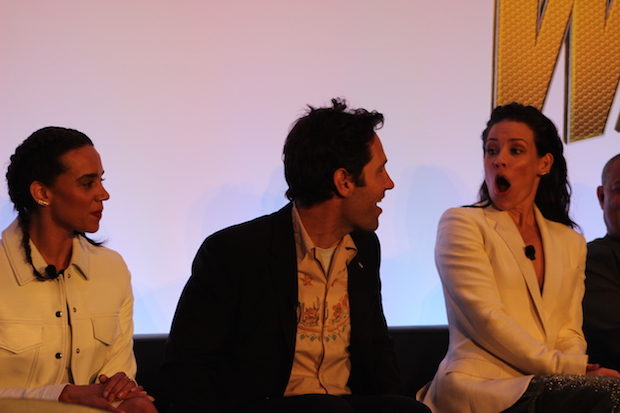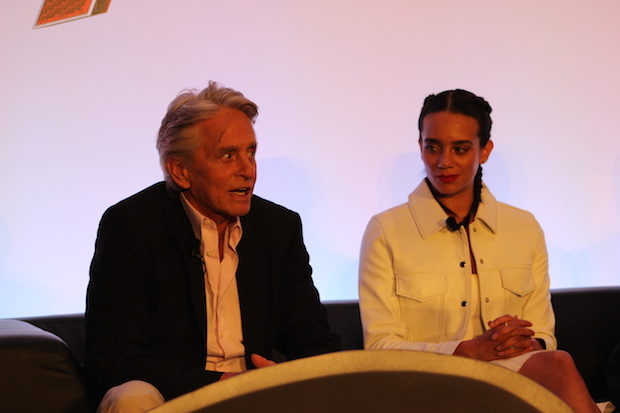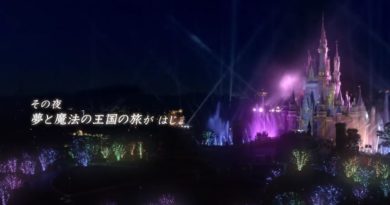“Ant-Man and the Wasp” Press Conference

Prior to its release on July 6, the cast and creative team behind “Ant-Man and the Wasp,” gathered in L.A. to discuss the movie’s relationships, writing process and unique special effects. On the panel were producer Kevin Feige, director Peyton Reed, Paul Rudd (Scott Lang/Ant-Man, writer), Evangeline Lilly (Hope Van Dyne/Wasp), Michael Douglas (Dr. Hank Pym), Laurence Fishburne (Dr. Bill Foster) and Hannah John-Kamen (Eva/Ghost).
The panel began the conference discussing how the unique humor of the film comes, in part, from Paul Rudd.
Peyton Reed: Paul’s as generous of a writer as he an actor…. Paul always has the whole picture in mind when he’s writing and when he’s acting.
Paul Rudd: I will say this: this has been a collaborative effort more than anything I’ve ever worked on. To say that I actually wrote it would be a gross overstatement. Truth of the matter is, Peyton was in the room working on this for a long time.
The film feature some highly coordinate sequences shot on location in San Francisco. Peyton Reed talked about the most daunting scenes in the movie to create.
Peyton Reed: There were a lot of daunting sequences, we really wanted to set out and go nuts with the [shrinking and growing] technology in this movie. And it occurred to us at some point, maybe it’s not just Ant-Man and the Wasp who can shrink and can grow, what if it was buildings, objects. What that did was create a lot of technical challenges. Maybe the biggest is we did a whole car chase that took us through the city of San Francisco, and we wanted to do a chase that you just simply would not see in another movie.

Kevin Feige addressed how the Quantum Realm will factor into later films.
Kevin Feige: Well without giving anything away, we love these storytelling tools…. In the first film we got a glimpse of it–for people who like to go through frame-by-frame we got a silhouette of Janet as the Wasp in there–which is a big story element in this movie. There are things that you see back there that Peyton has put in there. Where and how they pay off in the near term and in the long term remains to be seen.

The panel talked about the thrill and the payoff of Hope Van Dyne finally getting to wear the suit of the Wasp, particularly as the first titular female Marvel hero.
Evangeline Lilly: I love the element of someone who is completely in jeopardy, but also completely in control…. It was just fun to finally get to see her take on this role as something she’s been ready and willing to do basically her entire life.
Kevin Feige: The first Ant-Man film is all about how qualified Hope is and how the estrangement from her father is what is keeping her from doing this… so we always knew that the next one would be “Ant-Man and the Wasp.”
Evangeline Lilly: Originally, Wasp was going to be introduced in “Captain America: Civil War,” that was the original plan. And I never expressed it at the time, but secretly I was like, “Aw she doesn’t get an origin film.”… I still didn’t know there was going to be double billing, that didn’t come until later, and that was presented to me as a surprise by emailing me a screen-cap with the title.

Finally, the panel talked about how Scott Lang’s journey fits in with the rest of the MCU and how the consequence of his actions in “Captain America: Civil War” play out in this film.
Peyton Reed: It is a sequel to both [“Ant-Man” and “Captain America: Civil War”]. What was cool about “Captain America: Civil War” is that we could not ignore what happened to Scott Lang in that movie in this movie. And it gave us an organic jumping off point because my first reaction was “What would Hank Pym and Hope Van Dyne think about Scott taking the suit and getting involved with infighting with the Avengers?” Well they’d be pissed off.
Paul Rudd: It gave us a little bit of leeway to lean into something a little harder than we would have been able to. Because now the character has been established: they’ve seen Scott in two other films, people buy the abilities, they buy me in the role, they understand the rules. So it felt as if we had a little bit more freedom to play into the freedom…. I think the first time around we were still modulating, so that was one of the really fun parts of all of this.


